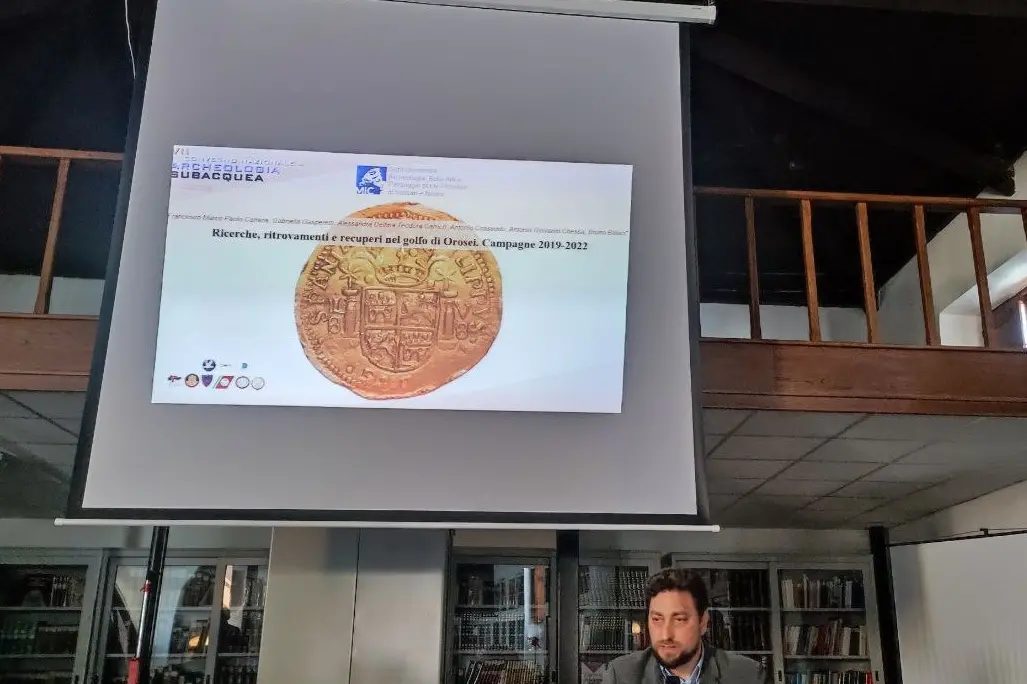La Maddalena, that ship sunk with the first gold coin minted in all of South America
The story of how it arrived in the Gulf of Orosei is still to be writtenPer restare aggiornato entra nel nostro canale Whatsapp
"What you have seen is the first gold coin minted in all of South America and I believe it is invaluable."
This was affirmed in La Maddalena, in the library of the MM Officers' Club, referring to the photo that appeared behind him, was Francesco Carrera, an official of the Superintendency of Sassari and Nuoro - Olbia office, who, during the 7th National Underwater Archeology , held from 11 to 14 May between La Maddalena and Olbia, illustrated the searches (carried out with other colleagues), the discoveries and recoveries carried out in the Gulf of Orosei. The coin in question (which is part of the finds from the 2019-2022 campaigns) was minted by the Lima Mint, closed a year and a half after its opening, in the mid-17th century. The story of how it arrived in the Gulf of Orosei is still to be written.
«It all began on 13 June 2019 thanks to the fortuitous discovery, by a German engineer, of 4 gold and 8 silver coins, which occurred in the Gulf of Orosei during a holiday».
The man made a regular complaint to the carabinieri which affected the superintendency. During the various searches carried out, a total of 32 gold coins and 14 silver coins, mostly Spanish, were found in the seabed. The oldest are from the 16th century, the last, and there are many, from 1712, under Philip V.
Another important find, Carrera said, «was that of a rudder, practically intact, 5 m and 25 cm long, perfectly preserved». Recovered, it is now located in the restoration center of Li Punti (Sassari). The size of the rudder suggests that it belonged to a rather large vessel. And a part of the stern was also found as well as many other wooden fragments. But the interesting thing, Dr. Carrera always said, which adds to the archaeological discovery is that, several years ago, in that area, «two bronze cannons were found, and some iron anchors, relating to a Spanish shipwreck, with lots of coats of arms, from the 17th and 18th centuries, which perfectly correspond to the profile dictated by this hoard of coins». And a little further south, "in 1992, a contemporary sword was found with our wreck".
Therefore, everything suggests that they were part of a single warship, and perhaps, in a future research campaign, the cannonballs or who knows what else could also be found.
What that ship was doing in the gulf of Orosei is not known, while it is easy to assume that the sinking, with the subsequent breaking of the ship into several parts, occurred following a terrible storm which led her to break, with all her crew and soldiers it carried, on the rocks of Punta Ginepro. And the dead must not have been few. The last note is that in these three centuries the pieces of the ship and its contents, including the coins, were covered by more or less important layers of sand , which varied significantly depending on the currents and environmental factors. And this, if on the one hand, makes their recovery difficult, on the other they have represented and still represent a significant impediment to looting, old and new.
